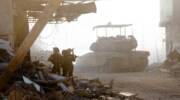Most people see and worry about the here and now, but great people see and worry about the future. The same was true during 40 years of wandering in the desert.
This week’s Torah portion is Beshalach (Exodus 13:17- 17:16), which means “and they were sent,” referring to the Jewish People’s official departure from Egypt. Among the many interesting events and readings in Beshalach is the gift of the manna.
For those unfamiliar, there were very few grocery stores, restaurants and bakeries in the Sinai desert back then (and today too!). But the more-than-one-million Jewish people had to eat during the 40 years of wandering in the desert. So God sent manna down from heaven each day (except on Shabbat), which was a bread-like food that sustained them.
Not many people know this, but the Midrash (rabbinic literature) teaches that along with the daily allotted loaf of manna came…jewelry! That’s right. The manna was accompanied by diamonds and other precious stones.
Now get this: The Midrash continues by saying that “the greatest” people (referring to the leaders) went right for the jewels, while “the simple folk” cared only about the manna.
The leaders, those who are supposed to be our role models, went for the “cash”? What example does that serve regarding priorities? Did they not want to eat? Were they not worried what their children would eat? Caring only for the gold?
What’s going on here?
I saw an interpretation offered by Rabbi Michel Twerski of Milwaukee. He notes that the financial and economic situation of the Jewish people in the desert was very unique: They had no needs. Everything was taken care of. Their food fell from heaven. They were accompanied by “Miriam’s Well,” which provided fresh water at all times. Their clothing never wore out (and even grew as they did). There was no disease or illness. God ensured that the weather was always comfortable. (And most important: No taxes!) It was heaven.
If one has no needs or expenses, then what use are the precious stones? Who would trade them? Where were they to be deposited? What would they be used to buy? Indeed, it may very well be that ultimately, the precious stones were completely useless! Precious stones in the desert would have about as much value as sand in a desert or snow in the Arctic.
The answer, it is explained, is that “great people” see far beyond the here and now. The “great people” knew, or were at least anticipating, that one day there would be a Mishkan (Tabernacle) and a Beit Hamikdash (Holy Temple), where a High Priest would need precious stones as part of his breastplate.
Aha! Now it’s starting to make sense!
This truly demonstrates the greatness of these leaders. Most people see and worry about the “now,” but great people see and worry about the future. These leaders were not collecting the precious stones due to some kind of materialistic obsession. Rather, they were collecting due to their sensitivity to the spiritual needs of the nation.
Similarly, it is well-known that trees do not grow in deserts. But if you take a look at the relevant verses, you will see that a lot of wood was needed to build the Mishkan in the desert! From where did they get it?
Our sages teach that Jacob, our forefather, foresaw that the Jewish people would need some kind of synagogue in the desert. As such, he planted cedar trees when he descended to Egypt so that his descendants would have wood to take with them when they left. Again, great people look ahead.
And so the lesson for us is to ensure that we are all “far sighted,” always trying to estimate future needs and challenges and dealing with them accordingly.
By: Rabbi Ari Enkin, Rabbinic Director, United with Israel
For more insights from Rabbi Enkin on this week’s Torah portion, click the links below.
https://unitedwithisrael.org/living-torah-miracles-still-happen/
https://unitedwithisrael.org/jump-into-the-sea/
https://unitedwithisrael.org/manna-from-heaven/
Do You Love Israel? Make a Donation - Show Your Support!
Donate to vital charities that help protect Israeli citizens and inspire millions around the world to support Israel too!
Now more than ever, Israel needs your help to fight and win the war -- including on the battlefield of public opinion.
Antisemitism, anti-Israel bias and boycotts are out of control. Israel's enemies are inciting terror and violence against innocent Israelis and Jews around the world. Help us fight back!






















